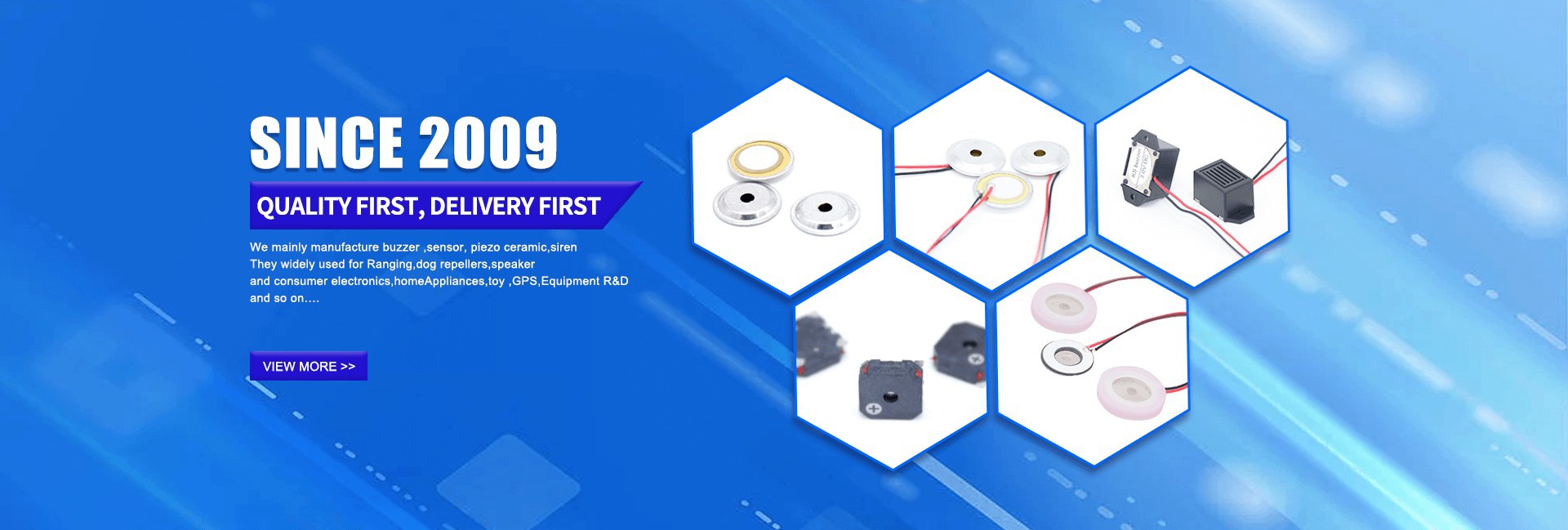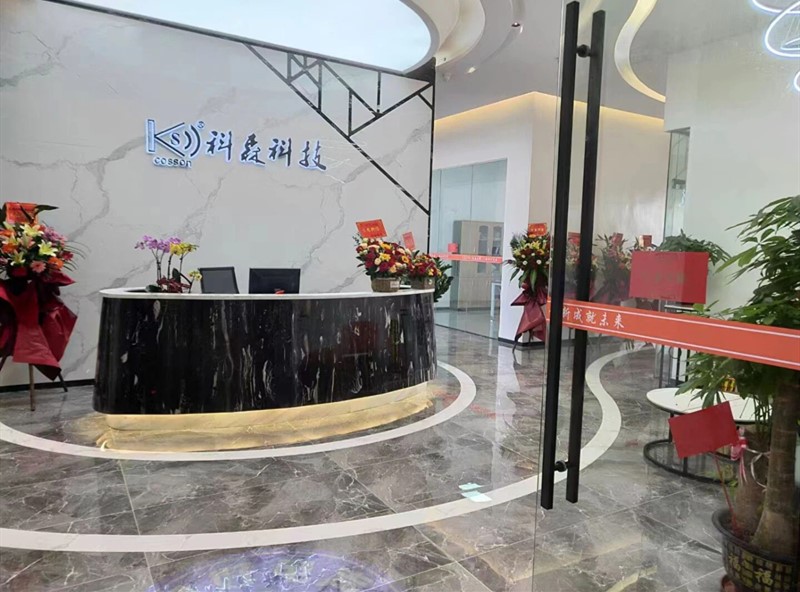Piezo Ceramic Element
Foshan cosson Technology Co. Ltd is a professional enterprise engaged in manufacturing buzzer,sensor, piezeceramic, speaker and so on . The company is located in Guandong. Since its inception the company spirit of "Quality first, customer first" business philosophy, full participation, excellence, to provide high-quality products for customers !
Cosson has talent, technology, quality, service, strategy and other advantages.Meanwhile,it is optimizing work flow, casting excellence, continuing to revitalize the brand to maintain the leading position, the vision of a more broad, higher goals and dedicated to creating more value for customers. The company has developed a series of products which are widely used in the production: communication, household appliances, automobiles, electric bicycles, UPS power supply, alarm; instrumentation, electronic toy and electronic clocks and so on.

Why choose us?
01
Quality assurance
Quality is our culture, we believe that the quality is the soul of an enterprise.
02
Good service
Good after-sale service, handling the customer complaint and solve problem for customers.
03
Reasonable price
Our products are complete in variety, good in quality, reasonable in price.
04
Fast delivery
We may promise that we can try our best to finish all of your orders within the shortest time.
What is Piezo Ceramic Element
Piezoelectric ceramics, a subset of ferroelectric ceramics, exhibit notable piezoelectric effects, achieved through the polarization of polycrystalline materials composed of mixed oxides such as zirconia, lead oxide, and titanium oxide. These materials undergo high-temperature sintering and solid-state reactions to develop their robust mechanical and reliable piezoelectric properties. Widely utilized in sensors, ultrasonic transducers, and microdisplacement devices, piezoelectric ceramics serve as critical components in various high-tech fields, including electronics, aerospace, and information technology. Their unique ability to interact with mechanical, electrical, and thermal forces makes them indispensable in advancing material technology.
Features of Piezo Ceramic Element
Relative dielectric constant
The relative dielectric constant is the ratio of the dielectric permittivity of the material (in this case E33T and E11T) to the dielectric permittivity of a vacuum
Resonance frequency
The natural frequency f0 of the plate by thickness calculated by the fllowing formula
Electromechanical coupling constant
The electromechanical coupling coefficients kp, k33, k15, kt and k31 describe the ability of the piezoelectric element to convert energy from electrical to me- chanical and vice versa.The square of the electromechanical coupling coefficient is defined as the ratio of the accumulated converted energy of one type (mechanical or electrical) to the input energy of the second type (electrical or mechanical). The index shows the relative directions of electrical and mechani- cal quantities and the type of oscillations. They can be associated with the mode of oscillations of a simple transducer
Elastic constant
The elastic properties of piezoelectric materials are characterized by elastic compliance (elastic compliance) or elastic siffness (elastic siffness). Elastic com- pliance determines the amount of strain due to an applied mechanical stress. Due to the fact that under the infuence of mechanical stress, the ceramic gen- erates an electrical response, which counteracts the resultant strain, the effective Young's modulus for a short circuit of electrodes is less than open circuited.
Transducers take electrical pulses from the power amplifier and transform them into sound waves. This process happens in reverse when the pressure of returning echoes acts upon the transducer.
The internal arrangement of the piezoceramic element’s crystals with their positive (+) and negative (–) poles lying in the same direction is the key factor. The piezoceramic element is activated by pulses of alternating current (AC) from the power amplifier.
The AC changes its direction of flow back and forth [which is why it is said to alternate, and this change in the direction of the flow is noted as (+) and (–)]. When a negative voltage is applied, the piezoceramic elements contract; when a positive voltage is applied, the piezoceramic elements expand. This is because the piezoceramic elements are polarized.
The contraction and expansion of piezoceramic elements convert the electrical pulse into sound waves that propagate until they bounce off an object or gradually weaken and dissipate.
When an echo returns to the transducer, the pressure of the sound waves acts on the piezoceramic element, causing it first to contract and then to expand as each cycle in the echo hits it. This fluctuating pressure on the element generates a small voltage, which is subsequently transmitted back to the transceiver and microprocessor.
The element undergoes expansion and contraction at the frequency of the electrical pulse. This occurs at a rate faster than the human eye can perceive. The frequency of the pulse generator in the power amplifier determines the frequency of the contraction and expansion.
Application of Piezo Ceramic Element
Choose the plan that suits you best.
Sound transduction applications
Piezoelectric ceramics are extensively used as sound transducers in devices such as pickups, microphones, headphones, buzzers, and sonar systems. They can generate vibrations at various frequencies, controlled by electronic circuits, to emit diverse sounds. For instance, electronic music greeting cards use the inverse piezoelectric effect to convert AC audio signals into audible sound signals.
01
Piezo detonators
In military applications, piezoelectric ceramics are critical components in anti-tank weaponry. The ceramics convert the mechanical impact of a projectile hitting a tank into a high voltage, triggering an explosion that destroys the target.
02
Piezo lighters
Used predominantly in gas stoves, piezo lighters employ piezoelectric ceramics to generate a high voltage from a simple press of a button, producing a spark that ignites the gas. These lighters are praised for their ease of use, reliability, and longevity.
03
Nuclear safety goggles
In the realm of safety, transparent piezoelectric ceramics are used in goggles designed to protect against the intense optical radiation from nuclear explosions. These goggles instantly convert radiation into high-voltage electricity, significantly dimming the light to safe levels within milliseconds, and then revert to their original state post-exposure. The goggles are lightweight and designed for easy integration with nuclear-proof safety gear.
04
Market Overview of Piezo Ceramic Element
Process of Piezo Ceramic Element




Preparation of green body
The green body is prepared by dry pressing. Prior to dry pressing, the powder must be granulated by adding a binder that accounts for about 5% of the material, stirring it evenly, and sieving it. Then, the pre-pressed block is crushed and sifted into a fine powder. The purpose of granulation is not only to distribute the binder more evenly in the powder, but also to compress the particles and expel any trapped air, making it easier to shape and resulting in a more uniform density in the molded samples.
Sintering and machining of ceramic components
After dry pressing, the green body needs to be sintered at high temperature to become a ceramic component. Sintering is the process of particle rearrangement and densification as well as crystal growth. Excessive sintering temperature can cause the ceramic crystals to grow too large or the microstructure to be uneven, while a temperature that is too low can result in incomplete crystal development, both of which can affect the piezoelectric performance of the PZT ceramic component.
Electrode deposition
Metal electrodes are necessary between the two layers of the PZT piezoelectric ceramic element to conduct electricity and exhibit piezoelectric properties. There are many traditional methods for depositing electrodes, such as silver burn-in, vacuum evaporation, chemical silver plating, and chemical copper plating.
Polarization
After the metal electrode is deposited onto the piezoelectric ceramic element, it needs to be polarized to exhibit the piezoelectric effect. To achieve perfect polarization and fully realize its piezoelectric performance, the polarization conditions, including the polarization electric field, polarization temperature, and polarization time, must be reasonably selected. Only under the action of the polarization electric field can the electric domains be oriented and arranged along the electric field direction. The higher the polarization electric field, the greater the effect of promoting the orientation of the electric domains, and the more perfect the polarization will be.

In 1880, the Curie brothers first identified the piezoelectric effect in tourmaline, marking the inception of piezoelectric research. Subsequently, in 1894, Woldemar Voigt discovered piezoelectric properties in crystals of twenty asymmetric point groups, highlighting quartz as a notable example. During World War I, Paul Langevin, a successor to the Curie brothers, utilized quartz's piezoelectric properties to develop the first underwater ultrasonic detector for submarine detection. The exploration of piezoelectric materials expanded significantly after World War II with the discovery of Barium Titanate (BaTiO3). In 1947, Bernard Roberts enhanced the piezoelectric properties of BaTiO3 through high-pressure polarization treatments. This advancement spurred Japan to lead in developing BaTiO3-based devices, such as ultrasonic transducers and high-frequency sensors. Research continued into the 1950s, culminating in the development of single-crystal ferroelectric materials by the late 1980s, which significantly advanced three-dimensional ultrasonic imaging. Today, innovations include the integration of nanotechnology in manufacturing and the development of lead-free piezoelectric ceramics to enhance environmental sustainability.
How does the Choice of Piezo Ceramic Element Contribute to the Efficiency And Performance of the Piezo Buzzer
The efficiency and performance of a piezo buzzer greatly depend on the type of piezoelectric ceramic chosen. The piezoelectric ceramic acts as the central component responsible for converting electrical energy into mechanical vibrations, thereby producing sound waves. It is crucial to consider the material's properties as they directly impact the overall effectiveness of the buzzer.
Opting for high-quality piezoelectric ceramics is essential as they exhibit a strong piezoelectric effect. This allows for efficient conversion between electrical and mechanical energy, resulting in a more responsive and effective sound output from the buzzer. The material's ability to swiftly deform and return to its original state is vital in producing clear and distinct sound signals.
Moreover, the choice of piezoelectric ceramic significantly affects the resonance frequency of the piezo buzzer, which is crucial for achieving optimal sound performance. The material's unique characteristics determine how rapidly it can respond to variations in the electrical input, influencing the speed and clarity of the generated sound waves.
Durability is another crucial consideration for the piezoelectric ceramic. Choosing a robust material ensures long-term reliability even when subjected to repeated mechanical stress. The ceramic's capability to withstand deformation without compromising its piezoelectric properties contributes to the longevity of the piezo buzzer across various applications.
Selecting a high-quality piezoelectric ceramic is essential to ensure the efficiency and performance of a piezo buzzer. Its responsiveness, ability to maintain resonance, and durability collectively contribute to the buzzer's effectiveness in converting electrical signals into audible sound. Consequently, it becomes a reliable component suitable for diverse applications.

Certifications

Our Factory
We attach great importance to, cherish all cooperation or cooperative partner of customers, to express the trust and expectations of our customers.Cosson's team of professional skills, has a very enthusiastic, with a lofty ideals and high aspirations enthusiasm and look forward to customers, together with the Chinese The electronic industry is booming as a modest, attained brilliant. Partnership, abide by integrity, common development!We firmly believe that the goods of electronic will continue to forge ahead, and you work together to create a better future! We hope to work with all of our overseas partners.Let's do it even better!




















